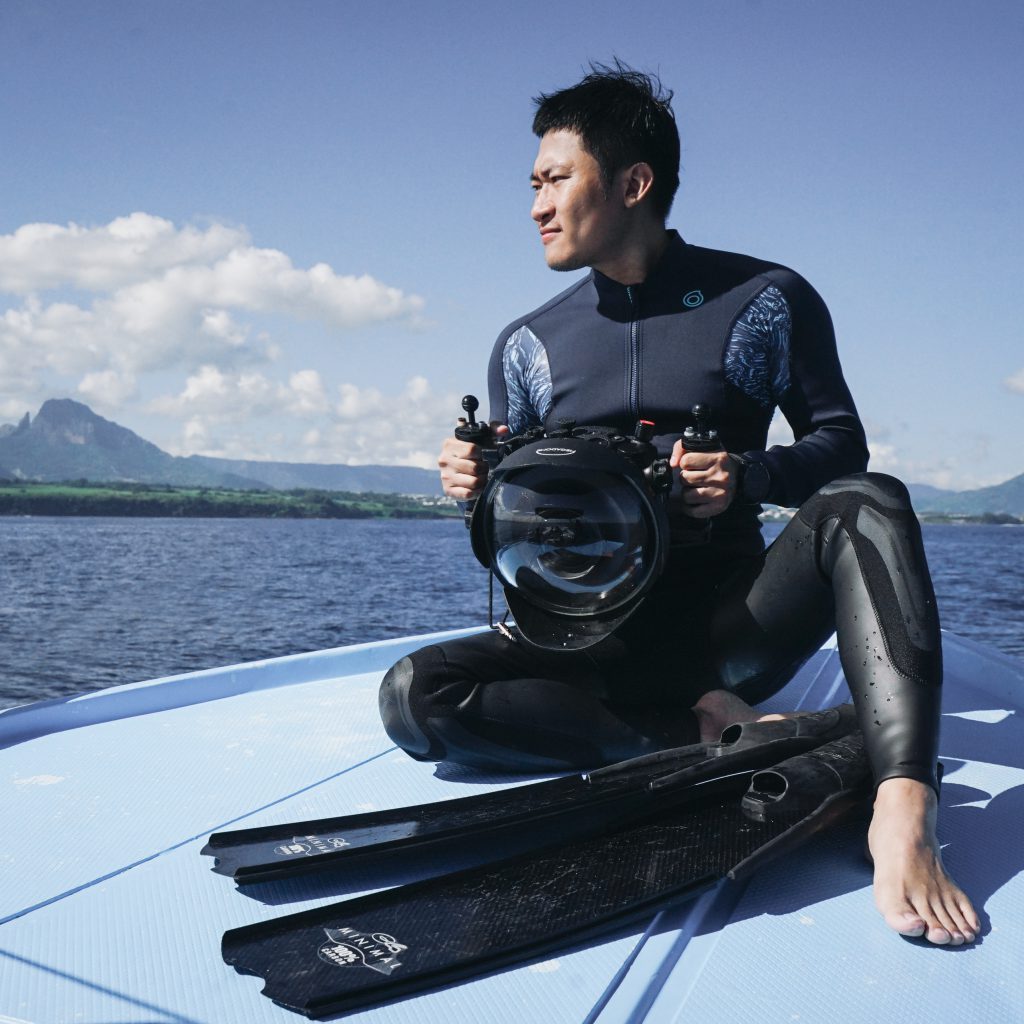Story: Huynh Phuong
Photos: Nguyen Ngoc Thien
In early 2023, Con Dao, a jewel among the waves, was voted first among “the world’s 16 best islands for a summer vacation” by the famous American travel magazine Condé Nast Traveler (CNTraveler). Con Dao is a top destination for diving and snorkeling.

Undersea paradise
With natural diversity and cultural and historical values, Con Dao enthralls visitors with its pristine nature, quiet beaches, and stunning snorkeling and diving sites. According to the CNTraveler website, “the beaches are long with soft sand and are great for light water sports like SUP and kayaking— and just a short kayak away from a beautiful reef for snorkeling.”

March to September is the ideal time to discover Con Dao’s dive sites, with light winds, gentle waves, clear water, and great visibility. “This is a beautiful season for Con Dao’s beaches,” shared Mr. Nguyen Ngoc Thien, a professional underwater photographer and seasoned diver who loves Con Dao Island. “Nothing beats plunging into the clear blue water, diving down, and capturing the coral reefs and the diverse marine life here.”

wn, and capturing the coral reefs and the diverse marine life h Visitors can choose from many diving spots in the Con Dao archipelago, including Dam Trau, Dam Tre, Bai Rong, Tau Be Cape in Con Son Bay, Trac Islet, Tai Islet, and Cau Islet. Each diving spot has its own ecosystem, with the highlights being coral reefs that are home to diverse and rich marine life. Many scientific assessments rank Con Dao as a leader in coral density in Vietnam’s waters, with an average coverage of nearly 45%. Over 210 species of coral inhabit the seas around these islands, including stony, branching, finger, staghorn, mushroom, and brain corals.

Dam Trau Bay boasts an unrivaled romantic beach where tourists can swim while watching planes take off and land at nearby Con Dao Airport. The waters of Dam Tre Bay are equally enticing with a plethora of branching, finger, fan, and mushroom corals. Cau Islet, on the other hand, captivates visitors with its vast and mysterious staghorn coral forest and giant stone corals, which grow at a slow annual rate of only 1-2 cm. Trac Islet and Tai Islet enchant travelers with untouched white sand beaches, crystal-clear water, and a surprisingly rich hard coral ecosystem.
In addition, Con Dao is home to over 1,700 different marine animal species. Turtles, rays, great barracudas, squids, Irrawaddy dolphins, and giant jellyfish at barracudas, squids, Irrawaddy dolphins, and giant jellyfish all contribute to the area’s picturesque tropical coral reefs.
“While diving in the Trac and Tai Islets, my group spotted a massive jellyfish swimming in the pure water above the coral reef. A woman in the group was particularly delighted and kept swimming after the jellyfish,” recalled photographer Mr. Thien. “I took this opportunity to capture its movements with my underwater camera. Its large body served as a moving shelter for small fish against dangerous predators.”
Discovering all of Con Dao’s pristine beaches and diving spots is an endless journey full of surprises. This summer, don’t hesitate to book a holiday in beautiful Con Dao.
TIPS FOR EXPLORING
Dam Trau Bay boasts an unrivaled romantic beach where tourists can swim while watching planes take off and land at nearby Con Dao Airport. The waters of Dam Tre Bay are equally enticing with a plethora of branching, finger, fan, and mushroom corals. Cau Islet, on the other hand, captivates visitors with its vast and mysterious staghorn coral forest and giant stone corals, which grow at a slow annual rate of only 1-2 cm. Trac Islet and Tai Islet enchant travelers with untouched white sand beaches, crystal-clear water, and a surprisingly rich hard coral ecosystem.
In addition, Con Dao is home to over 1,700 different marine animal species. Turtles, rays, great barracudas, squids, Irrawaddy dolphins, and giant jellyfish all contribute to the area’s picturesque tropical coral reefs.
“While diving in the Trac and Tai Islets, my group spotted a massive jellyfish swimming in the pure water above the coral reef. A woman in the group was particularly delighted and kept swimming after the jellyfish,” recalled photographer Mr. Thien. “I took this opportunity to capture its movements with my underwater camera. Its large body served as a moving shelter for small fish against dangerous predators.” Discovering all of Con Dao’s pristine beaches and diving spots is an endless journey full of surprises. This summer, don’t hesitate to book a holiday in beautiful Con Dao.
CON DAO’S REEFS
Mr. Thien earned his first PADI diving certificate in 2019, cementing his passion for underwater photography. His images not only serve as records of marine beauty but also as messages that promote a sustainable lifestyle, spread awareness and environmental concern throughout the community, and rally sea lovers to join hands and protect marine ecosystems.
With his extensive diving and underwater photography experience, Mr. Thien suggested a few points that tourists should keep in mind while diving or snorkeling:
• Unless you are fully certified AND dive regularly (a minimum of 20 dives per year), you should not scuba dive alone but with qualified instructors;
• Check your gear thoroughly on the way to the dive site to avoid any unforeseen issues;
• Always follow the rules and instructions given by instructors. If you have any questions, ask your instructor as soon as possible;
• Prepare suitable gear such as wetsuits, goggles, snorkels, and flippers to use while free diving, scuba diving, or snorkeling. In case of scuba diving and/or free diving (deep diving without air tanks), make sure you are properly trained and certified;
• Do not dive on an empty or full stomach and do not consume alcohol before diving. Alcohol dehydrates your body more quickly and can cause serious health complications under increasing pressure;
• Do not venture too far from where your ship is anchored, so that supervisors can still observe and help you in case of issues;
• Swim slowly and avoid diving too deeply. Dive and snorkel with others so that you can assist each other if necessary;
• While snorkeling or diving near coral, do not touch, step on, or damage either the reef or any other marine life in any way.










